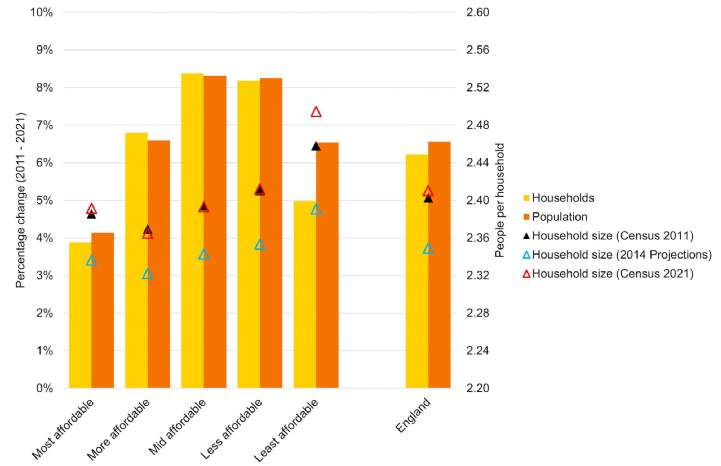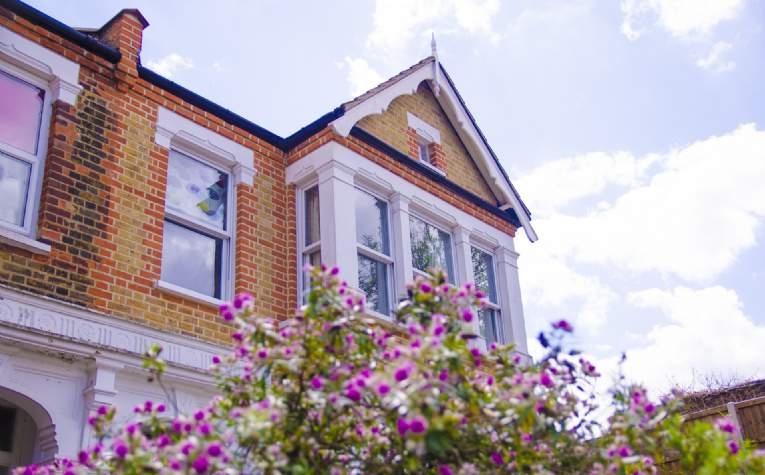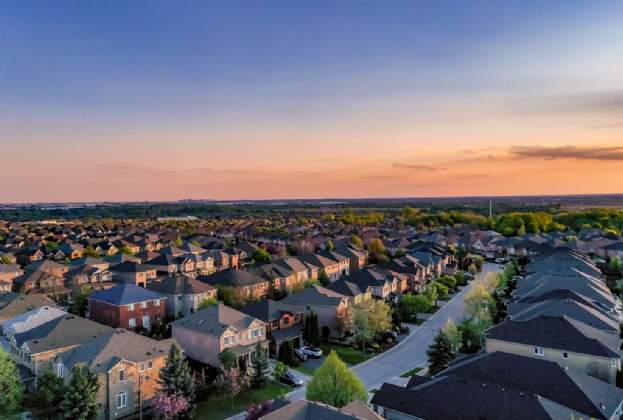According to the latest Census, the population of England has grown at a faster rate than households over the past 10 years. Since 2011, the population has increased by 7 per cent, whereas the number of households has risen by just 6 per cent. Because of this mismatch, there are now an average of 2.41 people per household in England, up from 2.40 in 2011.
The figures represent a departure from existing household projections which expected a trend towards slightly smaller households. The 2014-based projections anticipated an average household size of 2.35 people by 2021. This growth in the size of households may seem minor, but larger divisions begin to form at a more granular level, particularly in urban areas, or those with stretched affordability.
The relationship between households and affordability
House price to earnings ratios are the Government’s preferred method of monitoring affordability across the country. Along with household projections, the ratio forms the basis of the Government’s housing need calculations. Using the ratios, we have split England into five groups, ranging from the least affordable to most affordable, as highlighted in the map below.
.jpg)
.jpg)

.jpg)
(1).jpg)
.jpg)
.jpg)
.jpg)

.jpg)
.jpg)
.jpg)
